On the sands of Praia do Pedrogão, a striking figure now stands, still and alive with meaning. Ricardo Romero’s monumental work Emerge manifests as both memory and presence, a figure of resilience and grace, a woman sculpted in his signature luminous white, embodying centuries of tradition tied to the Portuguese coast.
This sculpture is an act of surfacing, of heritage, of dignity, of the voices of women who carried the sea upon their shoulders. Romero has created a sentinel: eternal, communal, and profoundly human.
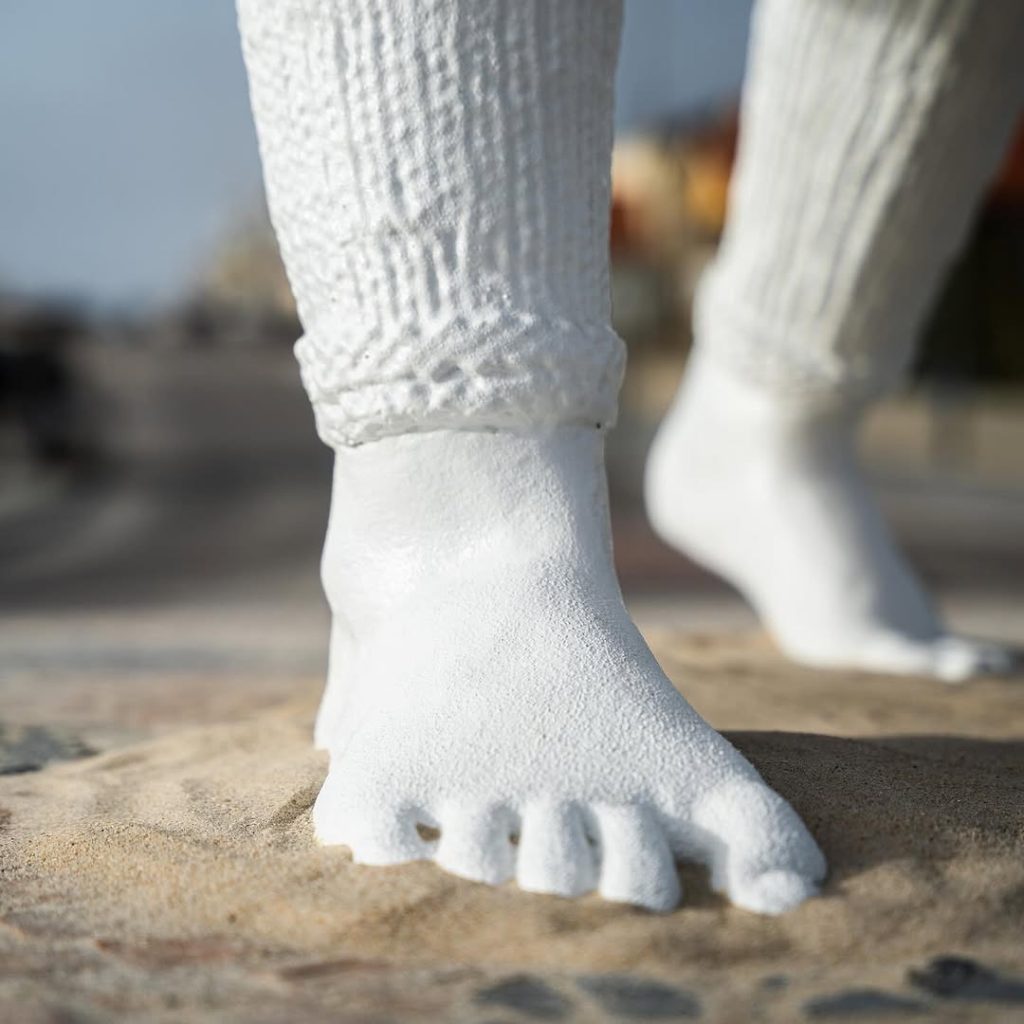
Ricardo Romero – Emerge Sculpture of the Varina at Praia do Pedrogão
The Varina: A Living Symbol
The subject of Emerge is the Varina, the iconic Portuguese fish seller, immortalised in folk memory, literature, and popular song. Varinas, often barefoot and strong, balanced heavy baskets of fish upon their heads, walking from the beaches into the bustling markets of Lisbon and beyond. They are iconic figures of Lisbon’s coastal life and symbols of resilience, beauty, and connection to the sea.
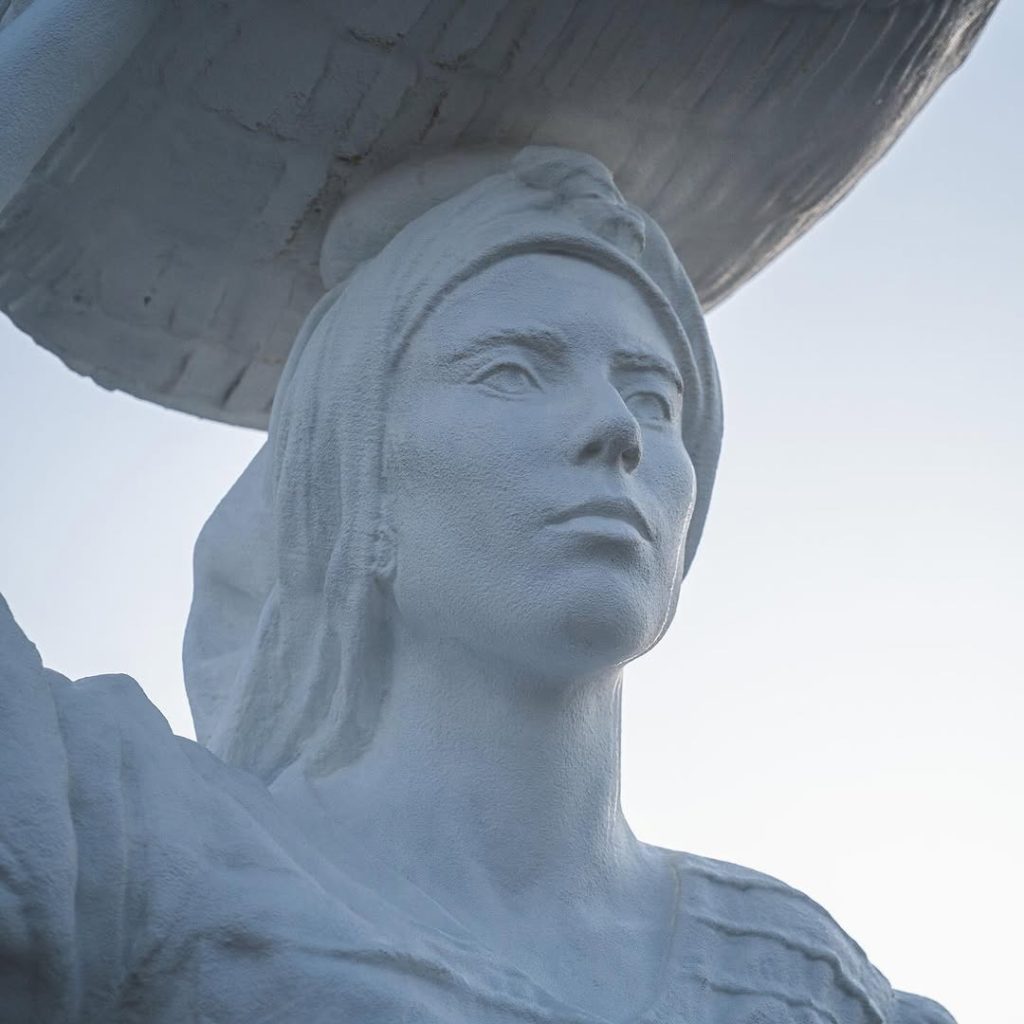
Ricardo Romero – Emerge Sculpture of the Varina at Praia do Pedrogão
In Ricardo Romero’s vision, this figure recalls the past and rises again, sculpted larger than life, her steady gaze is neither nostalgic nor sorrowful. Instead, it is commanding, quietly defiant and emerges as a cultural archetype reintroduced into the 21st century.
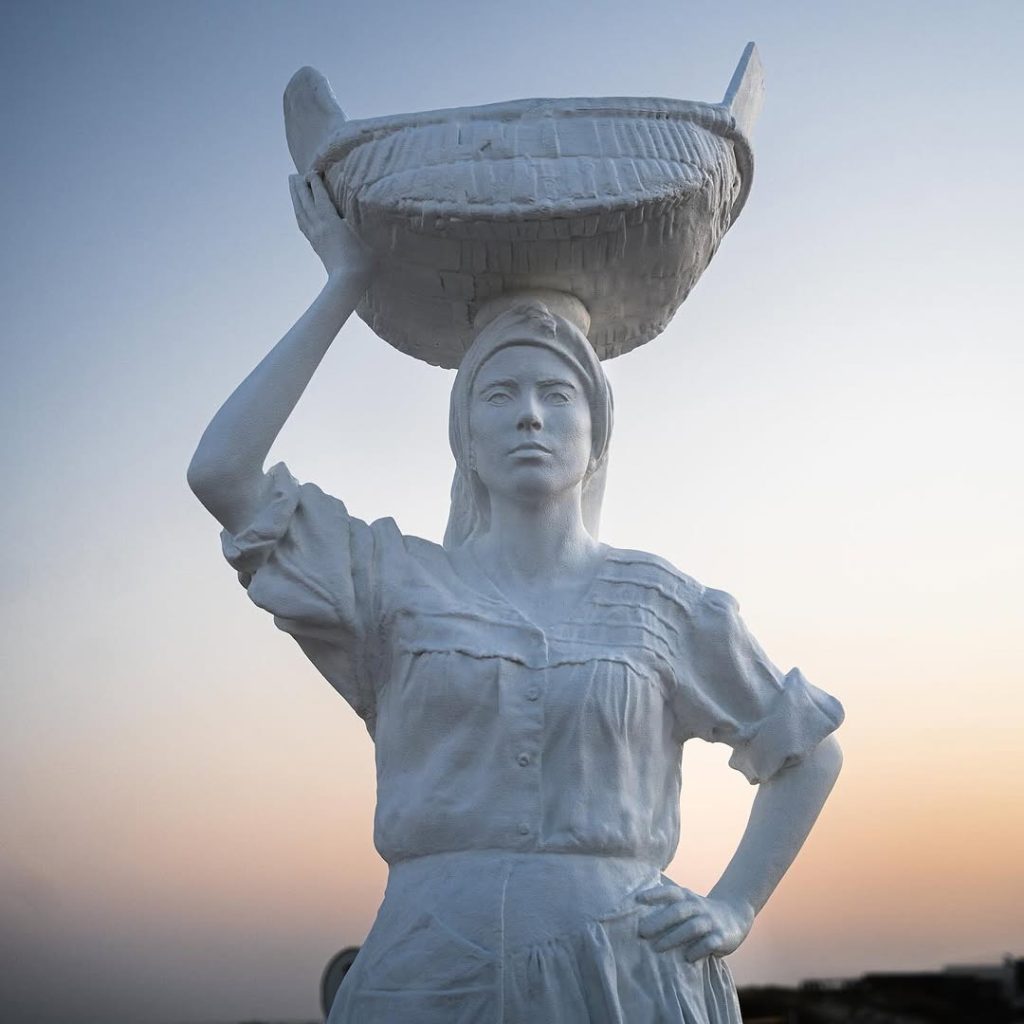
Ricardo Romero – Emerge Sculpture of the Varina at Praia do Pedrogão
Materiality and Scale: The Sea in Her Skin
Cast in pristine white, the sculpture dimensions are an impressive 3.6 x 2 x 1.4 m. Ricardo Romero heightens textures: the folds of her dress, the stitching of her apron, the weave of the basket, even the subtle knit of her stockings. Every detail is exaggerated into permanence, echoing the tactile truth of her daily labour.

Ricardo Romero – Emerge Sculpture of the Varina at Praia do Pedrogão
At 3.6 meters tall, Emerge towers, yet she remains deeply human. She is not a monument in the heroic sense but in the intimate: the dignity of everyday survival rendered monumental. By situating her against the vast horizon of the Atlantic, Ricardo Romero allows her form to resonate with the eternal rhythms of tide and sky.
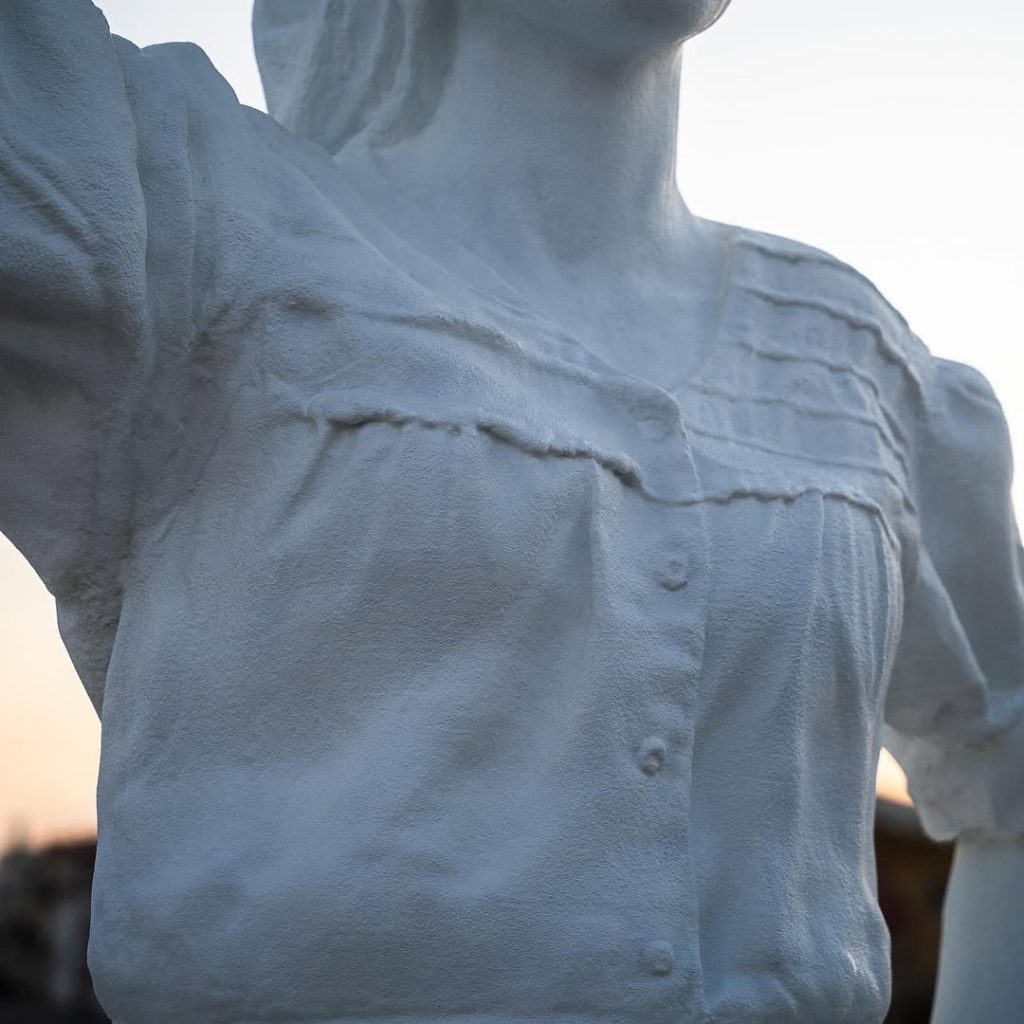
Ricardo Romero – Emerge Sculpture of the Varina at Praia do Pedrogão
Poetry as Compass: Carlos Queirós’ “Varina”
Accompanying Ricardo Romero’s Emerge is Carlos Queirós’ poem Varina, which captures her enigmatic grace.
“You’ll see that everyone
Smiles when they see you.
They don’t know what they feel,
But joy starts to steal
Their hearts as you pass through.And what do they think
As you walk on by,
Eternal, on the brink,
They greet the vast link—
The Sea in your sky!”
The poem offers a lyrical lens through which to encounter the sculpture. Just as the Varina’s presence once animated streets and marketplaces, here she animates the coastline.
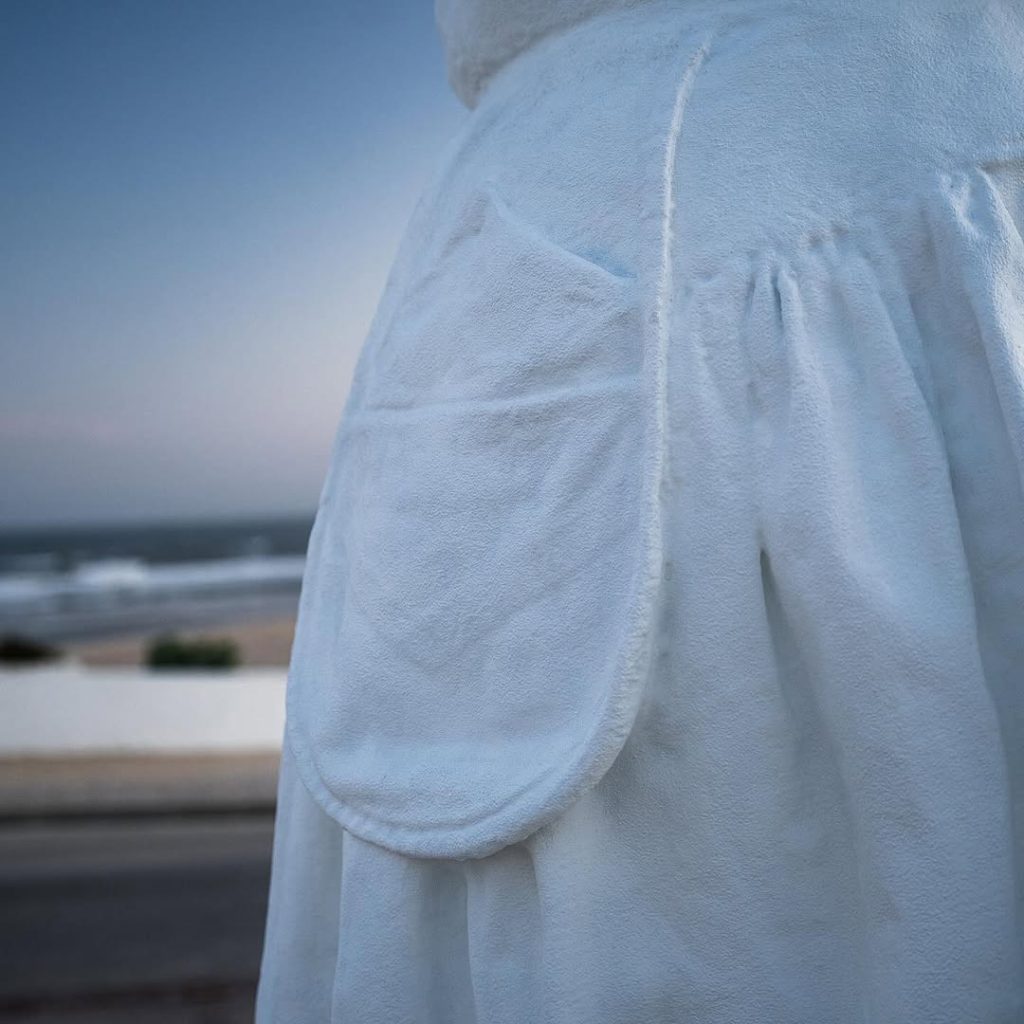
Ricardo Romero – Emerge Sculpture of the Varina at Praia do Pedrogão
Emergence as Contemporary Gesture
Ricardo Romero’s title is deliberate: Emerge. It speaks not only of a figure rising from history, but of a deeper act of resurfacing. In a globalised present where traditions can be forgotten, Ricardo Romero insists on the embodied memory of Portuguese coastal life.
Placed at Praia do Pedrogão, Emerge also reactivates the coastline as cultural stage. She becomes a meeting point between locals and visitors, past and future, poetry and sculpture.

Ricardo Romero – Emerge Sculpture of the Varina at Praia do Pedrogão
A White Varina by the Sea
Ricardo Romero’s Emerge is a sculpture that gathers history, poetry, and place into a single gesture. It honours the resilience of the Varina, transforms her into a timeless archetype, and opens a dialogue between tradition and the contemporary eye.

Ricardo Romero – Emerge Sculpture of the Varina at Praia do Pedrogão
In the meeting of art and ocean, Romero leaves us with a reminder: that to emerge is to refuse erasure, to carry the sea within, and to stand tall, barefoot, eternal, unyielding.
Image copyright Ricardo Romero